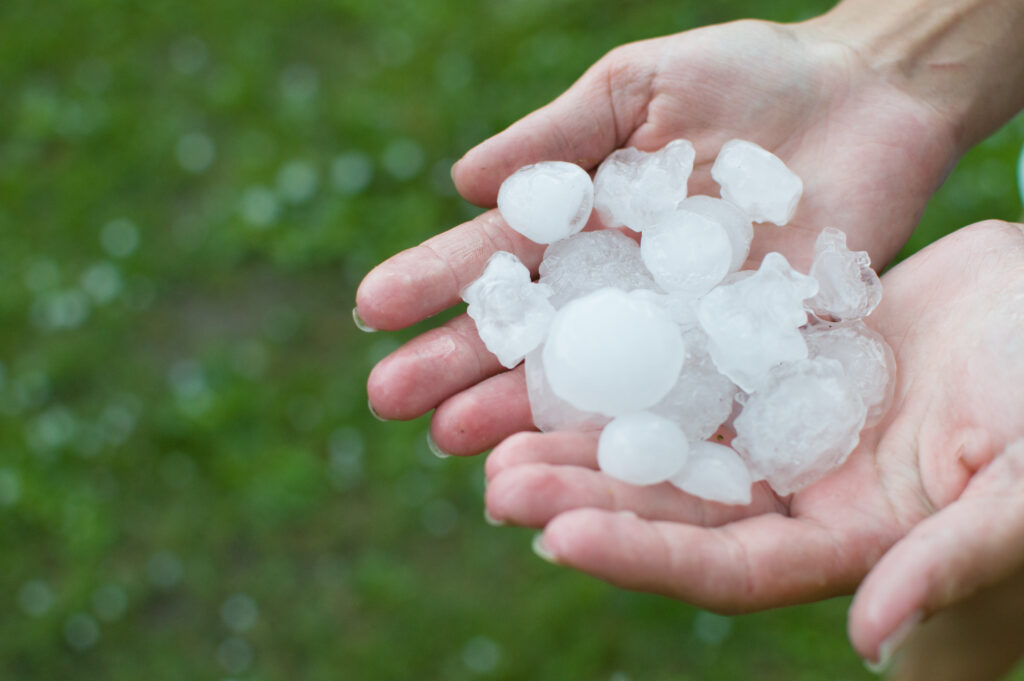Why Hail Size Matters in Weather Forecasts
Hail might seem like just another form of frozen precipitation, but the size of hailstones can tell you a lot about the severity of a storm. That’s why meteorologists use everyday objects to describe hail sizes in terms we all understand. From tiny pellets to baseballs and even DVDs, these comparisons help quickly convey how dangerous a hailstorm might be.
Understanding the size of hailstones is critical because larger hail can cause significant damage to homes, cars, crops, and even pose serious threats to people and animals caught outside. By using familiar items as reference points, forecasters can help the public grasp the risk level at a glance.
Small But Noticeable: Peas, Dimes, and Nickels
When hail is relatively small, meteorologists often compare it to peas, which are roughly 1/4 inch in diameter. While pea-sized hail is unlikely to cause major damage, it still signals that a storm is producing strong updrafts. Dime- and nickel-sized hail, measuring around 3/4 to 7/8 of an inch, mark the lower threshold for what the National Weather Service considers “severe” hail. At this size, hail may start to ding vehicles and damage gardens or outdoor property.
Getting Serious: Quarters, Ping Pong Balls, and Golf Balls
Once hail reaches the size of a quarter—about 1 inch in diameter—the risk of damage increases significantly. Quarter-sized hail is often associated with intense thunderstorms capable of producing damaging winds or even tornadoes.
Ping pong ball-sized hail (1.5 inches) and golf ball-sized hail (1.75 inches) are even more dangerous. These can crack windshields, dent vehicles, shred roofs, and harm people or animals caught without shelter. When storms produce hail in this range, it’s a clear sign that the storm is both powerful and potentially destructive.
Major Threats: Tennis Balls, Baseballs, and Softballs
When hail reaches tennis ball size (2.5 inches) or baseball size (2.75 inches), it becomes downright hazardous. Hailstones this large can break windows, punch holes in siding, and cause serious injuries. Softball-sized hail (4 inches) has been recorded in some of the most extreme storms, leaving behind a trail of widespread destruction.
These large hailstones are a result of extremely strong updrafts that repeatedly carry ice pellets upward into a storm cloud, allowing them to grow as layers of ice accumulate before falling to the ground.
Record-Breaking Hail: Grapefruits, DVDs, and Beyond
In rare cases, hailstones have been compared to grapefruits or even DVDs. A DVD is about 4.7 inches in diameter—used in extreme examples to illustrate the largest hailstones ever documented. The largest recorded hailstone in the U.S. was nearly the size of a volleyball, falling in South Dakota in 2010. It measured 8 inches in diameter and weighed almost 2 pounds.
These massive hailstones are exceptionally rare, but when they occur, they’re capable of catastrophic damage. Thankfully, storms producing this size of hail are uncommon, but they underscore the importance of taking hail warnings seriously.
Helping the Public Understand the Risk
By comparing hailstones to everyday objects, meteorologists can quickly communicate risk levels during severe weather events. These comparisons help people make faster decisions about seeking shelter or protecting property. A mention of “golf ball-sized hail” in a weather alert carries a lot more urgency than simply listing the size in inches.
So the next time you hear about a storm dropping “ping pong ball-sized hail,” you’ll know it’s not just a quirky comparison—it’s a visual cue to take cover and stay safe.


